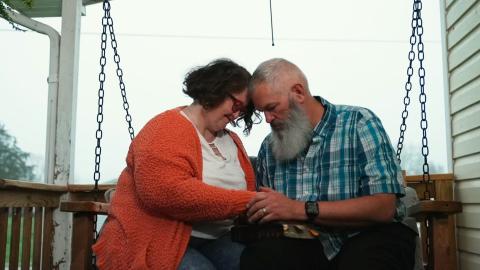Dr. Axe on the Power of Your Thought Life
HIS OWN STRUGGLE
An experience as a freshman in high school shaped Josh’s view of his abilities for years. After handing back midterm papers, his English teacher, Mrs. Nobel, asked him to stay after class, and then asked if he wanted to go to college. When Josh replied that he hoped to become a doctor or physical therapist, she laughed out loud. Next, she told him that he wouldn’t get into med school or any other variety with his grades. Josh doesn’t remember much of the conversation after that, but has never forgotten how he felt: utterly deflated. An ADHD diagnosis a few months later confirmed his fear – he simply wasn’t smart.
Josh graduated with a 2.3 GPA, but worked hard in a summer school program sponsored by the University of Kentucky. In the program’s English 101 class, he applied himself more than ever before. When the teacher, Mrs. Williams, returned the first writing assignment, he tightened up, fearing a response similar to the one a few years before. Instead, Mrs. Williams said, “Josh I was really impressed with your paper. You got an A+, the highest grade in the class.” He was both shocked and elated.
“Beliefs are more powerful than most of us can imagine,” Josh states. “They may be the single greatest determining factor of what your future will look like.” He points out that believing something doesn’t make it true, but does affect our thinking and behavior. When a belief is untrue - or true, but negative - he calls it a limiting belief. To transform limiting beliefs into what Josh terms unlimited beliefs, he recommends identifying the specific limiting beliefs we have about ourselves, others, or the world, and replacing them with unlimited ones. For example, a limiting belief might be, “I’ve made too many mistakes.” The unlimited belief could be, “I can’t change the past, but I can choose how to move forward.” Josh says the practice of replacing beliefs isn’t an overnight work, but a process that takes time, and can be reinforced by writing down new beliefs and repeating them often.
MINDSET SHIFTS
Josh recommends 12 changes in thinking, or “mindset shifts” in his book. In addition to replacing limited beliefs, he also encourages us to redefine success as becoming, not accomplishing. “If your idea of success has anything to do with how I once thought of it, and how most people define it, you’ve been lied to,” he says frankly. “You may have been told by your parents, a professor, a coach, your peer group, or a social media influencer that you will attain success when you get that trophy, acquire a position, make a certain amount of money, buy the car of your dreams. This is false.” Instead, Josh encourages us to think this: “Success is about optimizing my skill to help others and bring good to the world,” and not that: “Success is using what I’m good at to look good.” He offers the example of the famous founder of Apple, Inc., Steve Jobs, who left a legacy of great wealth – and great regrets. “What good is gaining the world but losing your soul?” he says, quoting Matthew 16:26 in the New Testament.
Another mindset shift Josh teaches relates to one’s purpose, knowing our why. He says we need to think this: “My life has value, meaning, and a specific purpose to make this world a better place,” not that: “I have no purpose and no power to make a difference.” We need to be able to answer the questions, “Why do I exist? Why do I do what I do each day?” Josh points out that those who know their why usually share these characteristics: a firm belief in life’s value, principled living, setting and achieving goals, excitement, growth, community connection, contribution to others, and living for something bigger than oneself.
POSITIVE PERSEVERANCE
When Josh began writing this book, he says he was in the best shape of his life. Then his world turned upside down. Having sustained a back injury years earlier, he decided to have a simple, natural procedure to stop the recurring pain -- a spinal, stem-cell injection. All should have gone well, but somehow there was bacteria present on the needle used. Eventually, that resulted in an infection and osteomyelitis, which eats away at the bone and causes great pain. One day Josh woke and couldn’t walk, and his doctor’s prognosis was anything but encouraging. He did everything he could think of to allow his body to heal, but months later, nothing had worked. The pain was so great he couldn’t move and was confined to bed. “There were a few days when I was engulfed in a dark feeling of despair,“ he admits.
Knowing that discouraging, self-pitying thoughts would only bring more misery, Josh came to a crossroads. By God’s grace, he decided to let his suffering refine him, not define him, to help him prioritize his values, and to grow in character. Every day Josh determined to pursue a mindshift of hope, grit, and gratitude. After six months of agony and losing 40 pounds, he began to improve. It wasn’t until nearly a year after the procedure that he could walk without any help. Today, he’s back to walking on his own and working out. His advice? Think this: “When I cultivate hope, grit, and gratitude, I build up resilience to thrive though hard things,” not that: “Wishful thinking or ignoring stress will make hard things go away.”
Discover more about Dr. Josh Axe at his website: JoshAxe.com. To purchase Dr. Axe's book, Think This, Not That, please click here: Think This, Not That.




